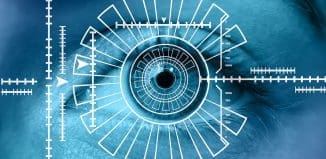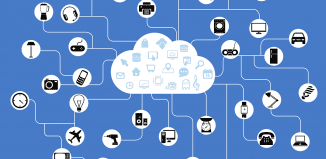Smart City – Convergence of IoT and Video Analytics
This post is also available in:  עברית (Hebrew)
עברית (Hebrew)
When video systems first moved from analogue to digital and then became part of the IoT world, they were primarily used to provide visual validation of sensor-detected events. As edge devices, such as sensors and network video become more intelligent, the interactions between systems are growing in sophistication and generating even greater value than each system could provide on its own.
Applying intelligent monitoring to environmental equipment (HVAC) makes it easy for building owners and property managers to determine existing operating costs based on current equipment performance. They can then compare that amount to the cost of upgrades and potential cost savings over time. According to sourcesecurity.com, businesses are also using smart applications to optimise allocation of desk space and conference areas. For instance, intelligent video has the ability to determine conference room occupancy far better than stand-alone motion sensors. When tied to automated room assignment systems, the additional statistics provided by video analytics might suggest room changes based on room size and number of attendees.
Augmenting these Smart City applications with intelligent video and analytics, opens up a whole new world of additional details. In Smart Lighting, a video sensor can now trigger a change in lighting based on rules such as vehicular and pedestrian events. These additional details can help very functional uses, even enabling parking lots to operate more efficiently and offer value-added services like space reservation and open space location notifications.
Solution providers in the smart grid arena are now offering heightened asset and perimeter protection via integration of network-based radar detection with video and audio analytics to minimise false detection alarms and point cameras to areas of interest for extremely effective and cost-effective perimeter security.
Retailing was one of the earliest adopters of smart device integration with network video and video analytics to support loss prevention and customer safety. They’ve been using video to analyse customer traffic and behaviour in order to improve product placement, increase product sales, as well as cross-sell related items. Adding programmable “Digital Signage” to the mix created new opportunities to display targeted messages based on viewer demographics about additional products and services of potential interest. Integrating network video with point-of-sale terminals to reconcile cash register receipts, adding heat mapping analytics to study customer foot traffic patterns, measuring check out wait times to increase employee productivity and efficiency as well as improve the customer experience are just some of the ways retailers have applied the principles of IoT to their advantage. Overlay intelligent building controls and you can see the exponential power of integrating intelligent video with other IoT devices and systems.
However, this sort of application produces an enormous amount of data. Collecting, transporting and synthesising this data into meaningful business intelligence can be daunting. It requires disciplined use of resources from the network infrastructure transporting the data locally to the various cloud technologies storing and disseminating it securely.
Smart sensor data is fairly lightweight in terms of actual data transmitted, but adding video elements can significantly increase the data transfer requirements. This highlights the need for the video to be more intelligent and interactive with the intelligent sensor and edge device technologies so that resources can be used more efficiently. Smart applications let you do that. You can program the video to sensor triggers or events, transmitting lower frame rate and resolution video for less interesting video and increasing the video settings when higher quality video is more relevant and valuable based on these sensor triggers.
As smart IoT technology continues to mature, the benefits of integration between network video systems and other network solutions will only get better. There’s already a much greater efficiency in operations as well as higher returns on investment through cost savings and more in-depth, usable business intelligence.




























